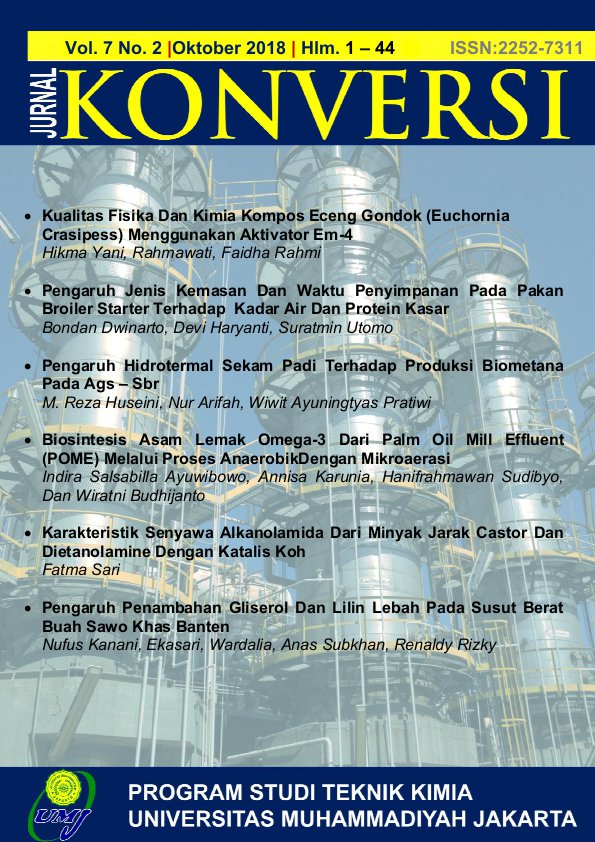PENGARUH HIDROTERMAL SEKAM PADI TERHADAP PRODUKSI BIOMETANA PADA AGS – SBR
Main Article Content
Abstract
The quantity of waste water from domestic and industrial activities has increased significantly over the year, equivalent with increasing production of sewage sludge (schmid, 2000). Sewage Sludge high contents of organic and derivatives (Ammonia Nitrogen (NH4+), Nitrate, Nitrite) and also levels of COD and BOD that exceed the quality standard. Anaerobic Granular Sludge – Sequence Batch Reactor (AGS-SBR) is a kind of Waste Water Treatment Plant (WWTP) which combine the biological treatment, aeration and sedimentation process into one reactor. AGS-SBR is able to reduce organic pollutants, COD and BOD above 60%. In cycle process of AGS-SBR is also able to optimize methanogenesis process in the growth of microorganisms to convert biomass (sewage sludge) became biomethane. Hydrothermal of rice husk is able to produce substrate that serves as a growth medium for microorganisms. The addition of rice husk (SP) and hydrothermal rice husks (SPT) can inffluence the biomethane production from sewage sludge with variation of hydrothermal temperature of rice husk 110oC and 175oC. The results of this study obtained the average of biomethane production is 0,0458 with the highest content is 0,219 on SPT 110 and the average of biomethane production on SPT 175 is 0,0483 with the highest content is 0,223
Article Details
Issue
Section
Articles
Authors who publish with this journal agree to the following terms:
- Authors retain copyright and grant the journal right of first publication with the work simultaneously licensed under a Creative Commons Attribution License that allows others to share the work with an acknowledgement of the work's authorship and initial publication in this journal.
- Authors are able to enter into separate, additional contractual arrangements for the non-exclusive distribution of the journal's published version of the work (e.g., post it to an institutional repository or publish it in a book), with an acknowledgement of its initial publication in this journal.
- Authors are permitted and encouraged to post their work online (e.g., in institutional repositories or on their website) prior to and during the submission process, as it can lead to productive exchanges, as well as earlier and greater citation of published work (See The Effect of Open Access).
